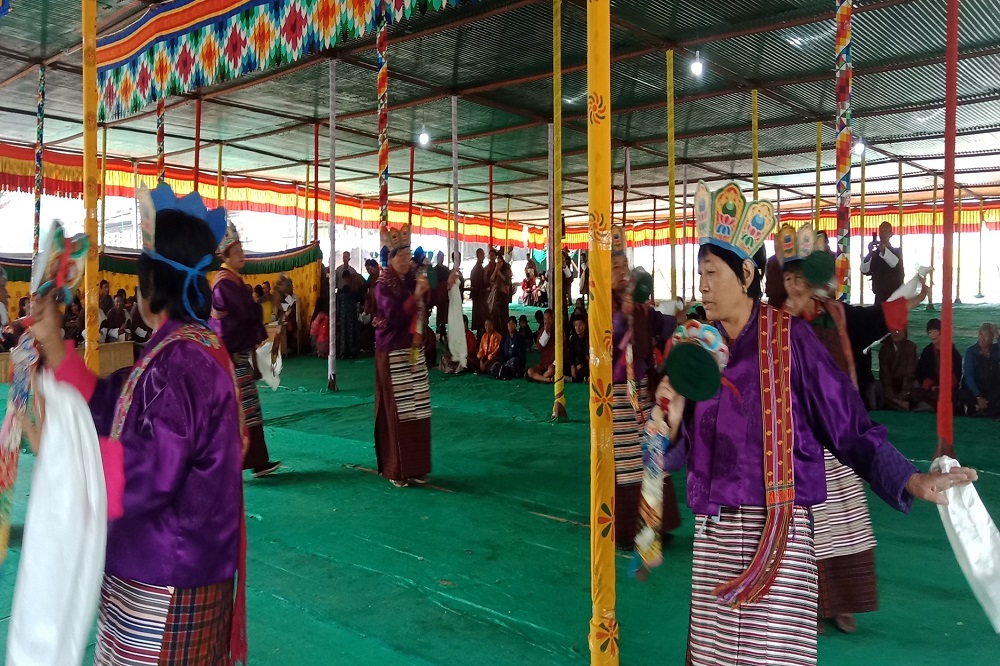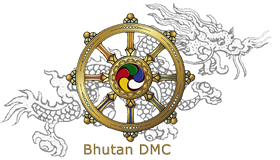Haa Summer Festival – A traditional celebration of the nomadic herders displaying their unique culture & traditions

Haa is a steep north-south valley with a narrow floor and one of the smallest districts in the country, just spread over an area of 1905 square km. The region experiences wet and warm summer while cold and dry winter with vegetation ranging from broad leaved forest in the southern part to coniferous and sub-alpine vegetation in the central and alpine vegetation in the highland. Ap (father) Chhundu, the protective deity of Haa is widely worshipped by people of the valley and religious belief centre around appeasing him as well as other Buddhist and Shamantic (Bon) deities. Majority of the population here depend upon agriculture, livestock and trading.
Haaps (the people of Haa) inhabit high valleys above 3000m. Strong-boned and resilient, the Haaps are devout and hardworking yak herders and farmers. Besides herding they mainly cultivate wheat, potatoes, barley and millet. The people of Haa are also famous for their skills in 13 traditional arts of Bhutan, produce some of the most exquisite pieces of jewellery, statuary and handicrafts from gold, silver, bronze, clay and slate.
Set amidst pristine lakes and high alpine valley, the Haa Summer Festival is a 2 day lively and uplifting celebration of traditional living-culture, nomadic lifestyles, unique regional cuisine, traditional sports and religious performances. It provides deep insight into the lives and traditions of nomadic herders showcasing their culture, lifestyles, demonstration of local cuisine, brewing of Ara (local alcoholic drink), traditional sports, religious performances, folk song and dances.
Showcasing the rich alpine flowers, folklore and culture, Haa Summer Festival usually incorporates following activities:
Day1:
* Opening of nomads and alpine flower exhibition
* Traditional folk welcome dance
* Local sports competition: Khuru (traditional dart game) & Soksum (light javelin throw)
* Demonstrational and experiencing local cuisine with regional speciality Hoentoe (hearty dumplings made from buckwheat and stuffed with fragrant grated turnip, dried turnip greens, mushrooms, garlic, onion chopped cabbage seasoned with ginger, ground walnut, chilli-powder, salt, butter sesame and poppy seeds) and Bhutan’s national dish Ema Datshi (chilli & Cheese preparation) with regional twist using Yak cheese
* Showcasing traditional cultural skills (Choeshum - Chapel, thangkha painting, bamboo products, Yak products, household items)
* Yak dance and other cultural performances
* Display of local costumes and ornaments
* Traditional rituals in preparation for the next day’s archery tournament
Day 2:
* Experiencing local breakfast speciality such as Akha (dough made of wheat flour), Yaksha Kam (dried yak meat) and Ezay (chilli paste)
* Drachen korni (A traditional procession to make a round in an auspicious direction to avoid bad lucks and supersede opponents in Archery game)
* Start of the Archery match
* Chundu Soelkha, Haap’s Ausa – Uesu, Yak Cham and mask dance
* Demonstration and experiencing local cuisine (Hontey, Khuley and Tshe Thub), Buck wheat flour processing, Tongpa, Tse Thu (local porridge), Phuelu, Chugo mago
* Nomadic life experience in yak tent, demonstration of yak milking, butter and cheese processing, competition with rice and butter measurement with traditional measuring scale. * Learn about the traditional art of Yak shearing and wool-making. Experience how yak dairy products are transformed into delicious traditional meals that showcases the culinary traditions of the Haa valley
* The Nublang Cattle Show – the special breed of cattle unique to the Haaps. Local folklore states that the Nublang cattle were granted to the people of Haa by the deity of the legendary Nub Tshonapata lake as reward for the kindness a local herder showed it.
* Alpine flower exhibition and competition (Competition on the identification, significance and naming the scientific terms of flowers found in the district and best photograph competition on alpine flowers)
* Demonstration and preparation of Ara (local alcoholic drink). Ara tshogchang ceremony (Ara served in a formal traditional way amidst bon-fire)
* Traditional songs and dances, performed by villagers
* Traditional dinner served amidst bon-fire
* Festival concludes with Tashi Labey joined by all guests (Tashi Labey is one of the traditional dance forms which is performed in order to mark an end to any kind of special occasion)
Image: Haa Dzongkhag Administration
HOTELS IN THIMPHU
HOTELS IN PUNAKHA & WANGDUE
HOTELS IN GANGTEY
HOTELS IN TRONGSA
HOTELS IN BUMTHANG
HOTELS IN MONGAR
HOTELS IN TRASHIGANG
HOTELS IN SAMDRUP JONGKHAR
HOTELS IN PHUENTSHOLING
HOTELS IN HAA
HOTELS IN GELEPHU
HOTELS IN ZHEMGANG
RESTAURANTS IN PARO
RESTAURANTS IN THIMPHU
RESTAURANTS IN PUNAKHA
TOUR ITINERARIES
TREKKING ITINERARIES
SPECIAL INTERESTS TOURS
UNIQUE FESTIVALS & FAIRS
BLOG


